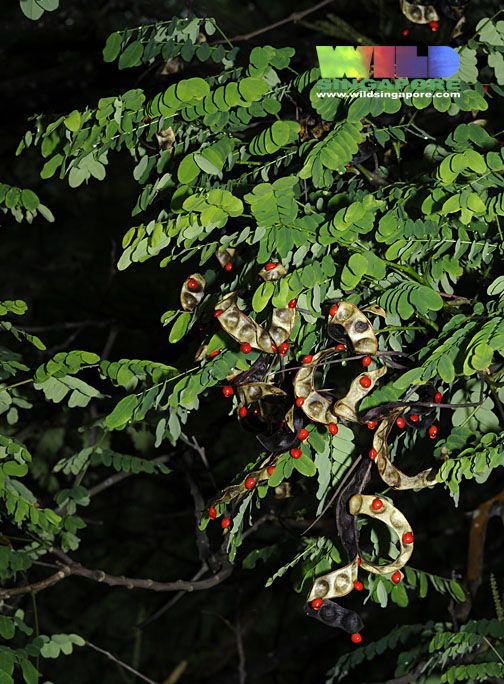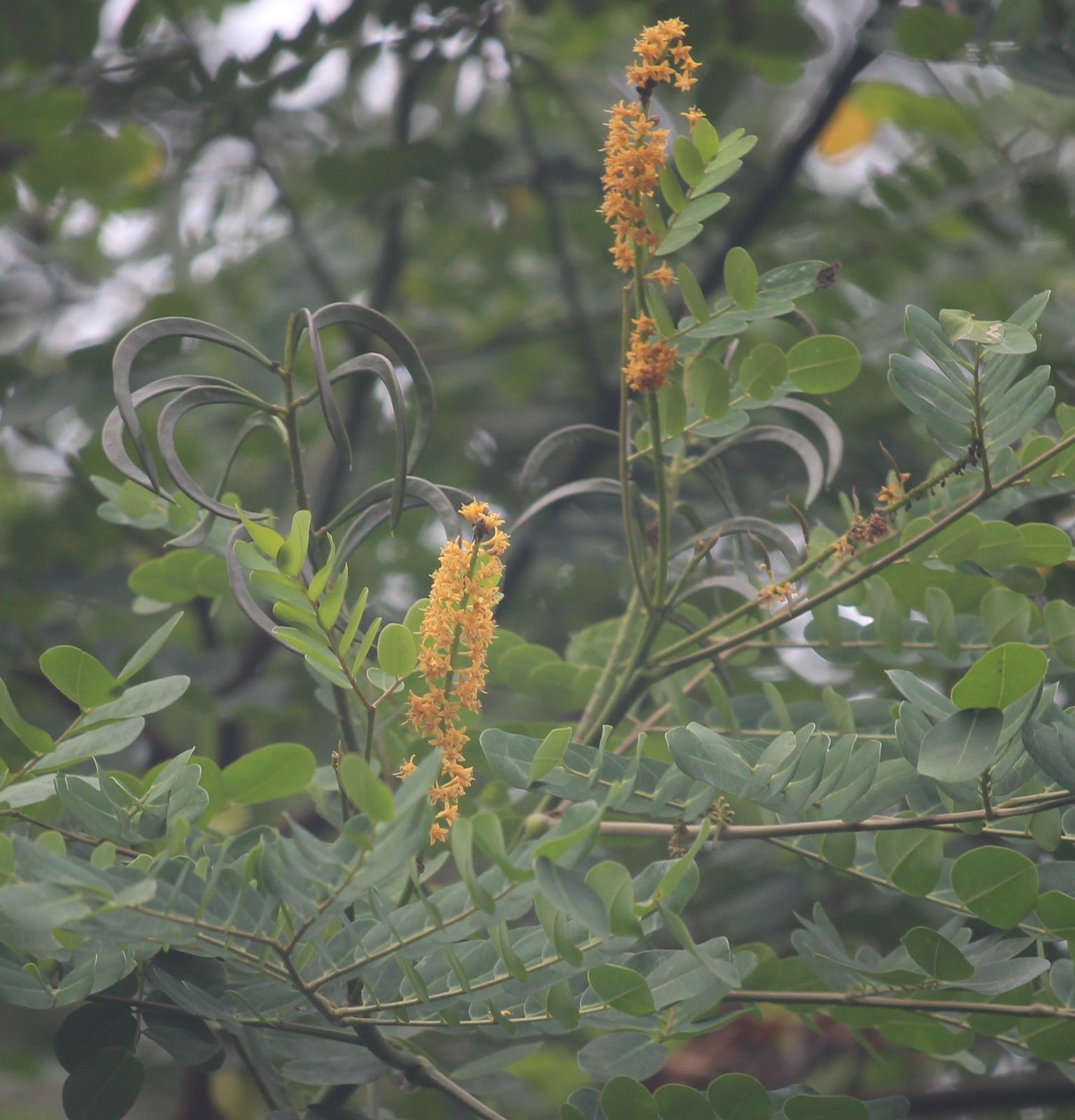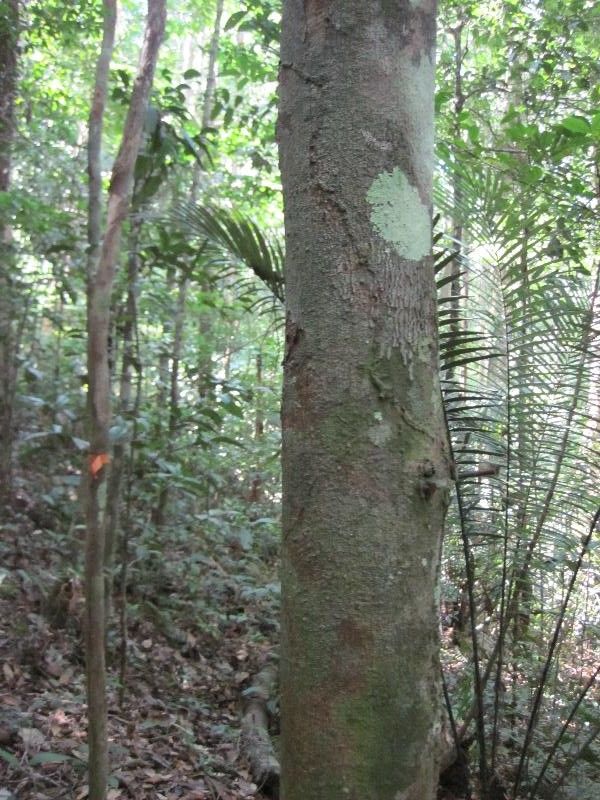Red Sandalwood
adenanthera pavonina
Also known as: ["Cinnamon Bean","Jeweler's Tree","Sandalwood Tree"]
Overview
A medium-sized deciduous tree native to tropical Asia, known for its hard, reddish wood and edible seeds.
Benefits & Perks
["drought tolerant","wildlife attractant (bees, butterflies, birds)","aesthetic foliage"]
Botanical Classification
| Phylum: | Magnoliophyta |
| Class: | Magnoliopsida |
| Order: | Fabales |
| Family: | Fabaceae |
| Genus: | Adenanthera |
| Botanical Name: | Adenanthera pavonina |
Plant Characteristics
Basic Information
- Category: Trees
- Suitable Location: outdoor garden in tropical or subtropical regions
- Suitable For:
- Is Weed: No
- Allergenicity: low
Environmental Needs
- Climate: {"temperatureRange":"15–35°C"}
- Hardiness: {"zones":"9–11"}
- Misting: rarely required, only if ambient humidity is very low
- Drainage: Fast-draining to prevent waterlogging.
- Soil Type: Well-draining, loamy soil with added organic matter; can tolerate slightly sandy conditions.
Maintenance Level
- Maintenance Level: moderate
- Toughness Level: moderate
- Pruning Frequency: Annually in late winter or early spring before new growth begins.
- Pruning Intensity: Moderate; remove up to one-third of old growth to rejuvenate the plant.
Care Details
Ideal Sunlight Coverage:
Full sun to partial shade; 6–8 hours of direct sunlight daily, with some afternoon shade in hot climates.
Sunlight Tolerance Tips:
Acclimate gradually if moving from shade to sun; protect from intense midday sun to avoid scorching; adjust placement based on indoor/outdoor conditions.
Care Requirements
Care Difficulty
moderatemoderate
Sunlight
full sun
Rotate plant for even growth; use sheer curtains to filter intense light; monitor for leaf burn.
Watering
every 7–10 days during growing season, reduce in winter
Water thoroughly until it drains from the bottom; allow soil to dry between waterings; avoid overwatering.
Soil
well-drained, loamy soil with moderate organic content
pH: Slightly acidic to neutral, pH 6.0–7.0.
Use a mix of potting soil, perlite, and compost; avoid heavy clay soils; ensure pots have drainage holes.
Temperature
Prefers warm temperatures, 65–85°F (18–29°C); tolerates brief dips to 50°F (10°C) but thrives in warmth.
Avoid sudden temperature changes; protect from frost; ensure good air circulation.
Fertilizing
every 4–6 weeks during active growth with balanced fertilizer
Apply fertilizer after watering to prevent root burn; flush soil occasionally to prevent salt buildup; adjust frequency based on growth rate.
Propagation
Methods
Stem cuttings or seeds; seeds are more reliable for this species.
Step-by-Step Propagation Guide
- Take a 4–6 inch cutting.
- Remove lower leaves.
- Dip in rooting hormone (if using).
- Plant in medium.
- Keep moist and warm.
Best Time: Spring or early summer when the plant is actively growing.
Environment
Warm, humid environment with indirect light; maintain consistent moisture.
Medium
Well-draining potting mix with perlite or sand; for seeds, use a sterile seed-starting mix.
Hormone
Rooting hormone is optional for cuttings but recommended for faster rooting.
Timeline
Cuttings may root in 4–8 weeks; seeds typically germinate in 2–4 weeks under ideal conditions.
Tools Needed
Pruning shears, rooting hormone, small pots, misting spray bottle.
Quick Tips
Use healthy, non-flowering stems for cuttings; maintain high humidity for faster rooting; keep soil consistently moist but not waterlogged.
Pruning & Repotting
Pruning Guide
Method
Selective thinning and heading back to promote airflow and compact growth.
Pruning Plan
Prune to maintain shape, encourage bushier growth, and remove dead or diseased branches.
Tools
Pruning shears, loppers (for larger branches), sterilizing solution.
Checklist
Sterilize tools; prune dead/diseased wood first; make clean cuts just above a bud or branch junction.
Repotting Guide
Best Season
Early spring before the active growing season begins.
Pot Size
Increase pot size by 2–3 inches in diameter; ensure the new pot has drainage holes.
Method
Remove plant gently; trim any circling roots; place in a slightly larger pot with fresh, well-draining soil; water thoroughly after repotting.
Suggestions
Repot every 2–3 years or when roots fill the pot; beneficial for younger plants to support growth.
Checklist
Check root bound status; prepare new pot with drainage; trim roots if necessary; use fresh soil mix.
Advanced Care Tips
Watering Mastery
Watering Checklist
Check soil moisture; water deeply; ensure drainage; adjust for season.
How to Apply Water Properly
Water directly at the root zone, ensuring even moisture distribution; water early in the morning to minimize evaporation; ensure excess water drains away to prevent waterlogging.
Watering Schedule Tips
Water deeply once the top inch of soil feels dry; reduce frequency in winter to prevent root rot.
Soil Improvement
Add perlite or coarse sand for drainage; incorporate compost for fertility; ensure soil is loose and airy.
Temperature Stress Management
Signs of Temperature Issues
Yellowing leaves, leaf drop, or stunted growth in cold; wilting or scorched leaves in excessive heat.
Cold Stress
Slows growth, may cause leaf drop, and increases susceptibility to root rot due to reduced metabolic activity.
Solution: Move to a warmer location; protect from drafts; reduce watering in cold conditions.
Hot Stress
Leaves may wilt, scorch, or drop; soil dries out quickly, increasing water stress.
Solution: Provide shade during peak heat; increase watering frequency; use mulch to retain soil moisture.
Fertilizing Guide
Fertilizing Checklist
Check growth phase; dilute fertilizer; apply evenly; avoid winter feeding.
Fertilizing Method
Use balanced liquid fertilizer diluted to half strength every 4–6 weeks during growing season (spring/summer); avoid fertilizing in winter.
Common Problems & Solutions
Toxicity Warning
Cats
ToxicThe seeds of Adenanthera pavonina are toxic to cats, capable of inducing severe gastrointestinal distress and other adverse effects. The toxic compounds can pose a significant health risk to felines.
⚠️ Symptoms:
🌿 Toxic Parts:
⚡ Toxic If:
if eaten
Dogs
ToxicThe seeds of Adenanthera pavonina are toxic to dogs, potentially causing severe gastrointestinal upset and other systemic effects. The toxic compounds can lead to significant discomfort and health risks in canines.
⚠️ Symptoms:
🌿 Toxic Parts:
⚡ Toxic If:
if eaten
Humans
Slightly ToxicThe seeds of Adenanthera pavonina contain toxic compounds that can cause gastrointestinal distress and other mild symptoms upon ingestion. The physiological impact is generally limited to the digestive system, though severe cases may involve systemic effects.
⚠️ Symptoms:
🌿 Toxic Parts:
⚡ Toxic If:
if eaten
Frequently Asked Questions
Q: Is the wood of Adenanthera pavonina valuable?
A: Yes, the wood is highly valued for its density, hardness, and reddish color, often used in jewelry and small decorative items.
Q: Are the seeds of Adenanthera pavonina edible?
A: The seeds are edible and have been used in traditional cooking, though caution is advised due to potential toxicity.
Q: Does Adenanthera pavonina attract wildlife?
A: Yes, the tree attracts bees, butterflies, and birds due to its nectar-rich flowers and seeds.
Quick Reference
| Family: | Fabaceae |
| Care: | moderate |
| Light: | full sun |
| Water: | every 7–10 days during growi |
Get Expert Care Tips
Download the Plantious app for personalized care reminders and plant identification!
Google Play App Store








